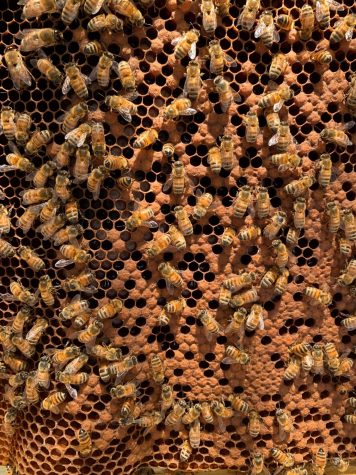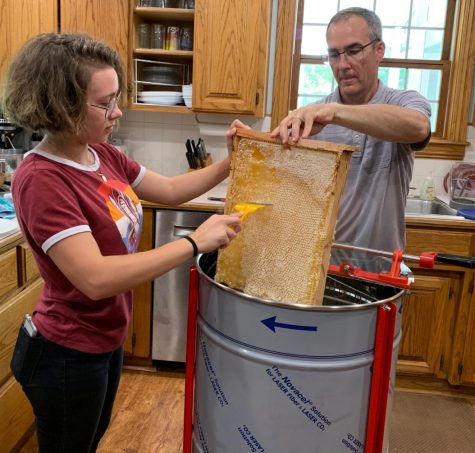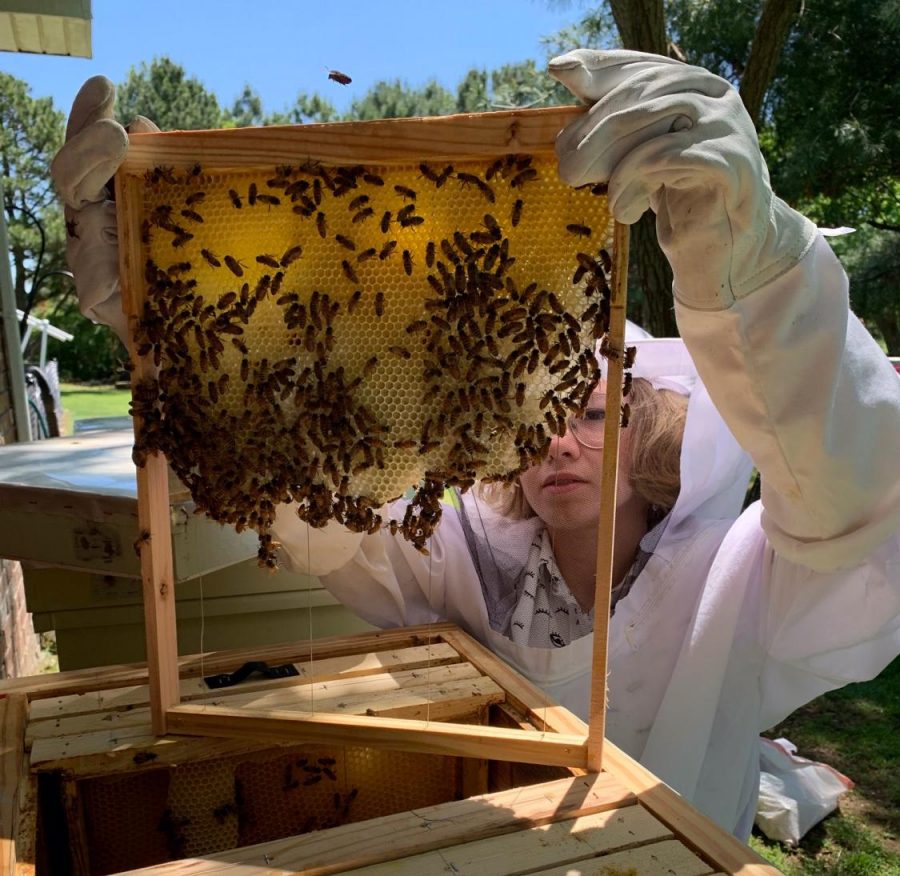Student raises bees in backyard, potentially wins $1000
Junior, Isabelle Sedrick, began raising bees with her father in 2018. Since then, they have accumulated four hives and about 10,000-60,000 bees. Sedrick and her father also make bee products to sell and enjoy for themselves, including, candles, chapstick, and honey.
Surprisingly low maintenance, the bees are left alone during the winter months by Sedrick and her father.
“In the spring and summer, we just try to check in on them to make sure the queen is laying enough eggs,” Sedrick said. “We make sure they have enough honey flow, basically, that they’re producing enough and that they’re all healthy, and that there’s no pests. There’s not much we do.”
Since getting her bees, Sedrick has learned more about their behavior. Bees are pollinators, meaning they go from flower to flower, pollinating them. The bees then bring nectar from the flowers back to the hive to make honey.
“They’re not aggressive,” Sedrick said, “So they don’t like to attack people unless the people are like, in their stuff, which makes sense. But they just, they’re just pollinators.”
Sedrick and her father create and sell bee products such as honey, chapstick, and candles.
“This year we made about 25-50lbs of honey. We mostly sell it by word of mouth, we don’t have a social media platform yet,” Sedrick said.
According to Sedrick, the process of making honey includes gathering frames from the hives and spinning them in the honey extractor which flings the honey out of the comb and to the bottom. Then, Sedrick filters the honey through a mesh material so there are no comb particles or anything else left in the honey. Finally, they jar the honey and sell it for about $6 per half pint.

“The candles we just melt down wax and add 100% essential oils then jar it or put it in molds,” Sedrick said, “and for chapstick we mix beeswax, coconut oil, and 100% essential oils, put it in tubes, and label them.”
Sedrick is applying for a Supervised Agricultural Experience (SAE) grant through the FFA that can potentially give her $1000 to spend on her hives anything bee related.
“The process is filling basic information out then answering various questions about my SAE and goals, and creating a budget and timeline,” Sedrick said.
